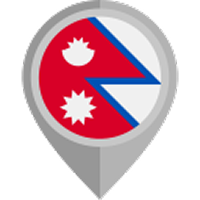Nepal vision | 28/09/2023
You're seeking a trekking experience off the beaten path, away from the bustling crowds and well-trodden trails. It is time for me to introduce you to the enchanting Nar Phu Valley Trek. However, what is so special about the Nar Phu Trek for explorers?
The Nar Phu Valley Trek is an exhilarating journey through Nepal's uncharted and captivating landscapes.
The trail takes you through the hidden kingdom of Nar-Phu, also known as The Lost Valley, offering a unique trekking experience beyond the more popular routes like Everest Base Camp and Annapurna Base Camp.
Exploring the Hidden Kingdom of Nar Phu Trek
Nar Phu Trek is situated in the Mt. Kangguru Himal in the Manang district. Additionally, it is an off-the-beaten-path adventure that promises to immerse trekkers in an ancient, untouched world.
In contrast to the well-trodden paths of Everest Base Camp and Annapurna Base Camp, the Nar Phu Valley Trek is an undiscovered gem. It remains a relatively lesser-known trek perfect for those seeking a quieter, less commercialized adventure.
Let’s find out more about the Nar Phu Trek, which offers a true fusion of nature, culture, and adventure, making it an expedition no other.
Ancient Architecture and Lifestyle in the Valley
The Nar-Phu Valley is a living testament to the preservation of architectural marvels and a way of life that has endured for over a millennium.
Towering stone lookout structures and robust wooden doors are guardians of tradition, transporting visitors back in time.

The valley's commitment to preserving its heritage allows us to witness the same structures and lifestyle highlights that were centuries ago.
The Unique Experience of Living in an Ancient Era
Trekking through Nar-Phu Valley is a journey of stepping into an ancient world frozen in time. The experience transcends the ordinary with a glimpse into a distant period.
From the narrow canyons to the high-altitude settlements, every step on this trek is a journey through an age when simplicity and nature intertwine.
It invites trekkers to dwell in a time long past temporarily. The Nar-Phu Valley Trek is an invitation to walk through history by embracing a rare encounter with an ancient way of life.
Nar Phu Trek Highlights and Special Features
The Nar Phu Valley Trek unveils a world of unparalleled natural beauty and provides trekkers with awe-inspiring landscapes that evolve at every turn.
Majestic snow-capped peaks, deep gorges, alpine meadows, and pristine glacial lakes combine with the breathtaking scenery.
Amidst the scenic grandeur, the Nar Phu Valley holds captivating special features. The Tashi Lakhang Monastery, 'the blessed house of gods,' is a spiritual haven. It is amidst the mountains with a glimpse into the region's rich religious and cultural heritage.
Moreover, lucky trekkers might encounter rare wildlife sightings, including the elusive snow leopard, the iconic blue sheep, and the gentle yaks, enhancing the trek's allure.
Trek Routes and Itinerary Options
The itinerary for the Nar Phu Trek looks like this:
Day 1: Arrival in Kathmandu
Day 2: Kathmandu to Dharapani
Day 3-4: Trek to Koto and Acclimatization
Day 5-6: Trek to Meta and Acclimatization
Day 7-8: Trek to Phu Village and Acclimatization
Day 9-10: Trek to Nar Village and Acclimatization
Day 11-12: Trek to Kang La Pass Base Camp and Ngawal
Day 13-14: Trek to Manang and Acclimatization
Day 15-16: Trek to Muktinath and Departure
Nepal Vision Trek offers tailored itineraries with a day-by-day breakdown for varied trek durations. Whether a week-long or extended adventure, each plan ensures a memorable exploration of Nar-Phu Valley's wonders.
The journey commences in Kathmandu and leads through the picturesque terrains of Annapurna Circuit Trek via Besishahar to reach Nar-Phu Valley. Trekkers are treated to diverse landscapes, from alpine meadows to quaint villages, culminating in the hidden kingdom.
For the adventurous spirit, alternative routes beckon. Opportunities for side excursions, like the Himlung Base Camp or the world's highest Tilicho Lake, enrich the trek with unparalleled experiences.
What is the best season to visit Nar Phu Trek?
The optimal times for the Nar Phu Valley Trek are spring (April and May) and autumn (September to November). These periods offer moderate temperatures, clear skies, and pleasant weather, ensuring a rewarding trekking experience.
The valley bursts into vibrant colors in spring as flowers bloom and the trails rejuvenate. Conversely, autumn provides crisp air and incredible visibility, perfect for capturing breathtaking views. Both seasons offer stable weather conditions with a smooth and enjoyable trek.

In the rain shadow zone of the Annapurna and Himlung Peaks, Nar Phu Valley is relatively unaffected by monsoon, making it accessible even during this season.
The valley's strategic location shields it from heavy rainfall, with a unique opportunity for trekking in Nepal when other regions grapple with adverse climatic conditions.
What are the required trekking gear and essentials?
- Clothing: Layered clothing, moisture-wicking base layers, insulated jackets, waterproof pants, hiking boots, and comfortable socks.
- Accessories: Sunglasses, sunhat, gloves, and a headlamp with spare batteries.
- Gear: Backpack, trekking poles, sleeping bag (preferably -15 degrees), water purification tablets, and a thermal water bottle.
- Personal Items: Toiletries, first aid kit, sunscreen, and any necessary medications.
- Miscellaneous: Camera, binoculars, and a watch.
Packing efficiency is crucial. Pack layers that can be easily added or removed based on temperature changes. Prioritize versatile clothing and pack according to the expected weather conditions for the trek. Keep essential items easily accessible.
Depending on the season, adjust your packing list accordingly. For colder seasons, prioritize warm clothing and gear designed for low temperatures. At higher altitudes, ensure you have gear suitable for altitude sickness prevention, like Diamox, and warm clothing to combat extreme cold.
Responsible Trekking and Environmental Considerations
Promotes Responsible Trekking Practices
- Stay on Designated Trails: Avoid creating new trails to protect the fragile ecosystem.
- Proper Waste Disposal: Carry out all non-biodegradable waste and dispose of it responsibly in designated areas.
- Respect Wildlife and Nature: Do not disturb wildlife, and avoid picking plants or flowers.
- Minimize Noise Pollution: Keep noise levels to a minimum to preserve the tranquillity of the environment.
Leave No Trace Principles and Respecting the Local Ecosystem
- Plan Ahead and Prepare: Proper planning ensures minimal impact on the environment.
- Leave What You Find: Leave natural and cultural features as you found them.
- Dispose of Waste Properly: Carry out all trash and dispose of it responsibly.
- Respect Wildlife: Observe animals from a distance and avoid disturbing them.
- Be Considerate of Other Visitors: Yield to other hikers and maintain a peaceful environment for all to enjoy.

To wrap up, The Nar Phu Valley Trek beckons with its uncharted allure, immersing adventurers in the hidden paradise of Nepal. It offers an offbeat and raw adventure, inviting explorers to witness an ancient world largely untouched by modernity. Nepal Vision Treks is your trekking partner for the wonderful Nar Phu Valley trekking experiences.
FAQS
1) What is the difficulty level of the Nar Phu Valley trek?
The difficulty level of the Nar Phu Valley trek is moderate to challenging, varying with the chosen route and altitude.
2) Can the Annapurna Circuit be done in 10 days?
Completing the Annapurna Circuit in 10 days is challenging due to its typical 17-21 days duration.
3) How long is the Annapurna Circuit trek?
The Annapurna Circuit trek is approximately 160-230 kilometers long, depending on the specific route.
4) What is the altitude of Nar Nepal?
The altitude of Nar Phu Valley in Nepal ranges from about 3,120 meters to 5,320 meters.
5) Which is the deepest valley of Nepal?
The deepest valley in Nepal is the Kali Gandaki Gorge.
6) Where is the Tsum Valley?
Tsum Valley is located in the Gorkha District of Nepal, in the northern part of the country.
7) What is the altitude of Phu?
The altitude of Phu, a village in Nepal, is approximately 4,080 meters (13,386 feet).









